Understanding Hip fractures
Hip injuries, particularly fractures, can drastically limit movement and daily activities. The hip joint connects the thigh bone (femur) to the pelvis and relies on powerful muscles such as the gluteus maximus and gluteus medius for stability. A hip fracture usually follows a fall or trauma and often affects older adults with osteoporosis. Understanding the injury helps patients and families set realistic recovery goals and choose the right physiotherapy and hip fracture rehab programme.
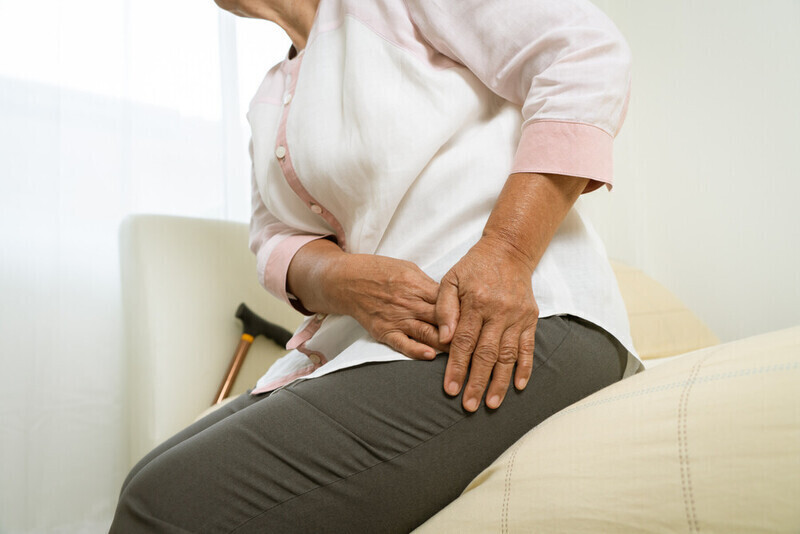
Physiotherapy for a Broken Hip
Recovering from a hip fracture, especially a fractured neck of femur, is one of the most significant physical challenges an adult can face. At Estuary Physio, we specialise in hip fracture rehabilitation programmes that help you regain mobility, confidence, and independence safely after surgery.
Our experienced physiotherapists provide home visits and clinic sessions across London and Essex. We follow hip fracture rehabilitation guidelines recommended by NICE and the Chartered Society of Physiotherapy (CSP) to deliver structured, safe, and effective care.
When to Start Physiotherapy After a Hip Fracture
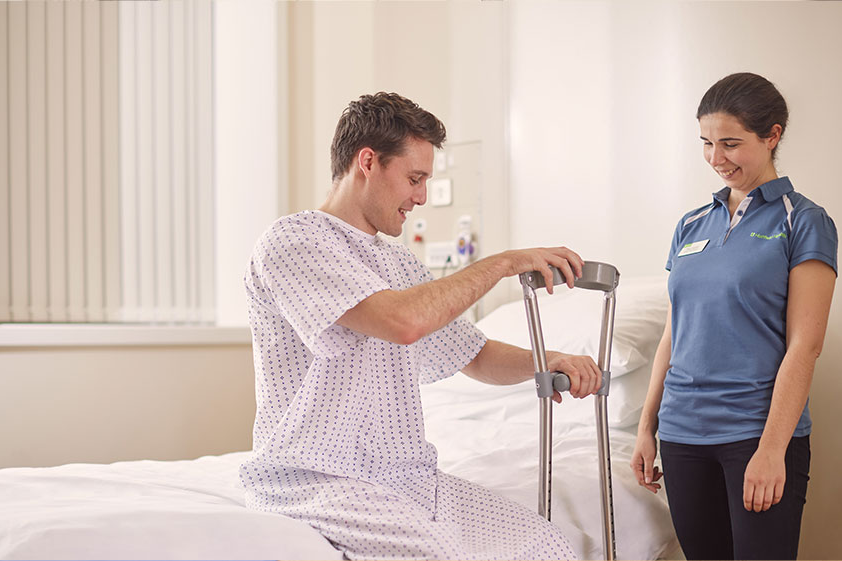
Physiotherapy should begin within 24–48 hours post-surgery once you’re medically stable. Early mobilisation accelerates recovery, improves circulation, and reduces complications such as clots or pneumonia. Your physiotherapist will tailor your plan to the surgical repair—internal fixation, hemi-arthroplasty, or total hip replacement—and your specific weight-bearing limits.
Starting early preserves muscle strength and joint mobility while building confidence in standing and walking. Our hip physiotherapy approach emphasises guided transfers, balance work, and gradual progress using walking aids until you can move independently.
Hip Fracture Rehabilitation Guidelines
Our structured hip fracture rehabilitation programme follows evidence-based principles to guide each stage of recovery. Sessions combine stretching, strengthening, and progressive movement to restore stability and independence while preventing setbacks.
Every individuals recovery is different depending on your personal circumstances, and you should follow your physio or doctors advice. However, here is a general overview of what may be included during rehabilitation from a hip fracture.
Stage 1 - Acute Post-Surgical Phase (0–2 Weeks)
- Gentle bed exercises such as ankle pumps and knee bends to maintain circulation.
- Assisted transfers to sitting and standing with support, protecting the operated leg.
- Education on safe movement, wound care, and use of walking aids.
Stage 2 - Early Mobility & Strength (2–6 Weeks)
- Progressive weight-bearing training as cleared by your surgeon.
- Targeted strengthening of quadriceps, glutes and hip abductors.
- Walking re-education: parallel bars → frame → sticks as balance improves.
Stage 3 - Functional Rehabilitation (6–12 Weeks)
- Balance and coordination drills to lower fall risk.
- Task practice - sit-to-stand, walking, and stair climbing with safe technique.
- Home assessment to optimise safety and independence.
Stage 4 - Maintenance & Prevention
- Long-term strengthening and mobility training.
- Posture, footwear and fall-prevention education.
- Support for returning to recreational and community activities.
Managing Pain and Discomfort
Pain management is essential for progress. Under medical guidance, ice packs, compression, and appropriate pain relief reduce swelling and allow safe movement. Our physiotherapists incorporate gentle, non-weight-bearing exercises—such as leg raises and heel slides—before advancing to standing hip abduction and rotation as healing improves. Gradual exercise progression keeps joints flexible and minimises complications.

Hip Fracture Recovery Exercises
Rehabilitation after hip fracture surgery relies on regular, progressive movement. Exercising safely and consistently is the key to regaining strength, flexibility and confidence. These hip fracture recovery exercises are prescribed by your physiotherapist to improve circulation, maintain muscle activity and prevent stiffness. Always follow professional guidance and stop if pain increases.
Below are some exercises commonly prescribed in physio exercise programmes after hip fracture surgery, however always follow the instructions provided by your physio or treating doctor / consultant.
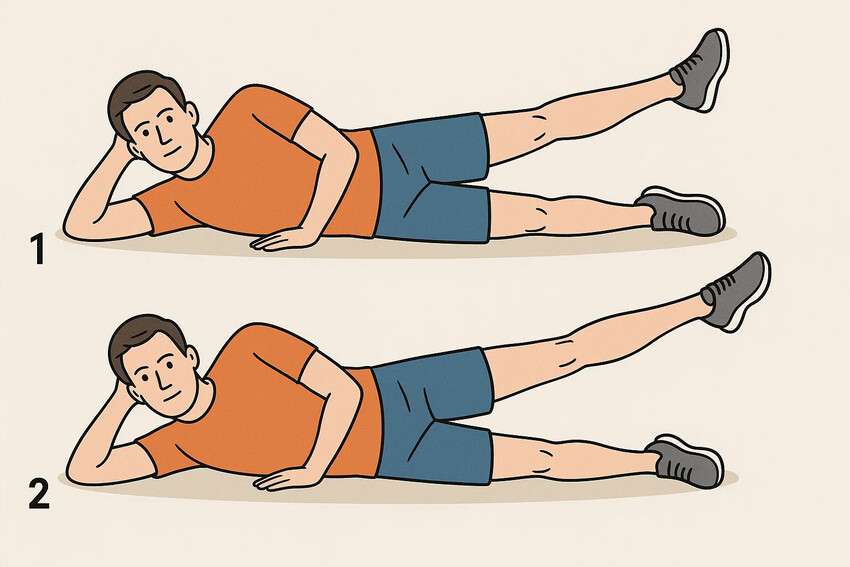
Early Recovery Exercises
- Ankle pumps: flex and point your toes to boost circulation and reduce swelling.
- Static quadriceps squeezes: tighten your thigh muscles, hold 5 seconds, relax — repeat 10 times.
- Glute squeezes: contract buttock muscles to improve pelvic stability.
- Heel slides: slowly slide your heel toward your hips to encourage knee and hip flexion.
- Knee bends: gently bend both knees with feet flat to maintain joint mobility.
Tip: add exercise photos with alt text such as “hip fracture exercises pictures” to support visual learners.
Progression Exercises
- Bridging: lift hips from the bed, engaging glutes and core for functional strength.
- Standing mini-squats: perform shallow bends while holding a surface for balance.
- Side-leg raises: strengthen hip abductors to improve walking stability.
- Step practice: gradual stair climbing with rails or crutches for coordination.
- Balance drills: single-leg stance or wall support to retrain balance and proprioception.
Home-Based Hip Physiotherapy
Many clients prefer recovering in familiar surroundings. Our home visit Physio service lets you practise mobility where it matters most - in your own environment. Home-based sessions combine tailored exercise, safety checks and carer education to make daily life easier and safer.
Benefits of Fracture Physio at home
Real World Practice
Real-world practice for transfers, chair rises and stair navigation.
reduced Falls Risk
Reduced risk of falls or re-injury during early recovery.
Home Environment
Personalised programmes using your furniture and environment.
Carer Training
Guidance and reassurance for carers and family members.
Equipment
Our physiotherapists bring exercise equipment and walking-aid advice to ensure every session is safe, practical and motivating.
Clinic Rehabilitation
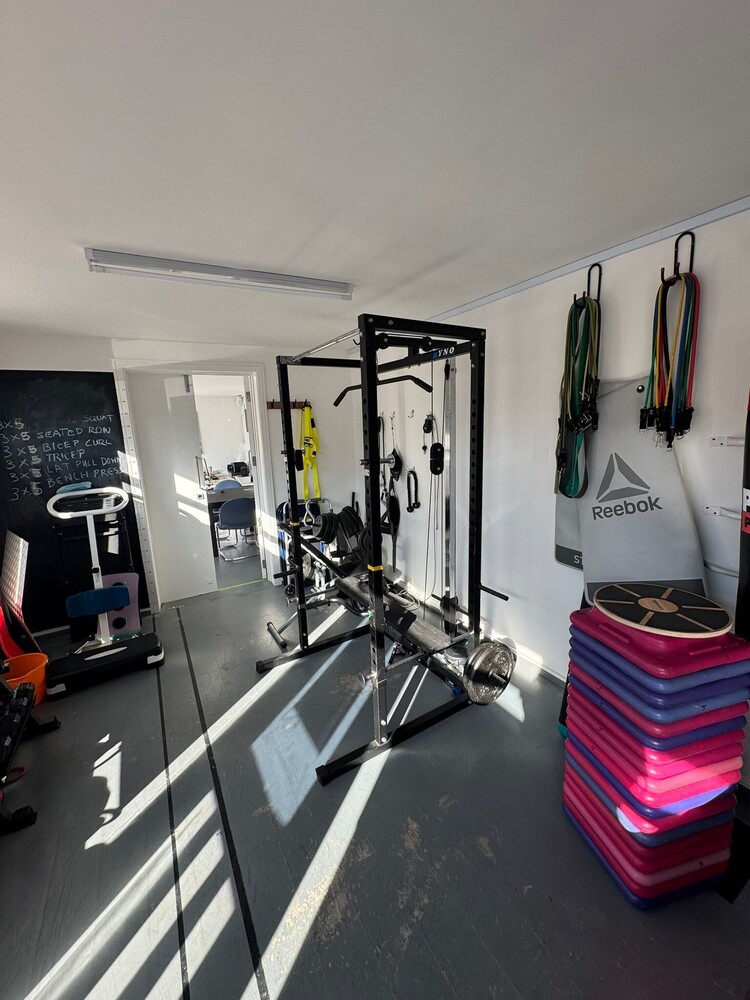
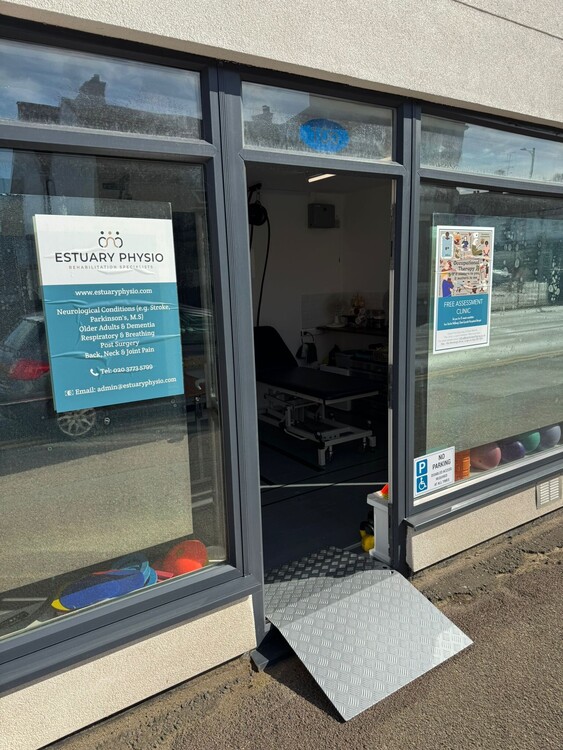
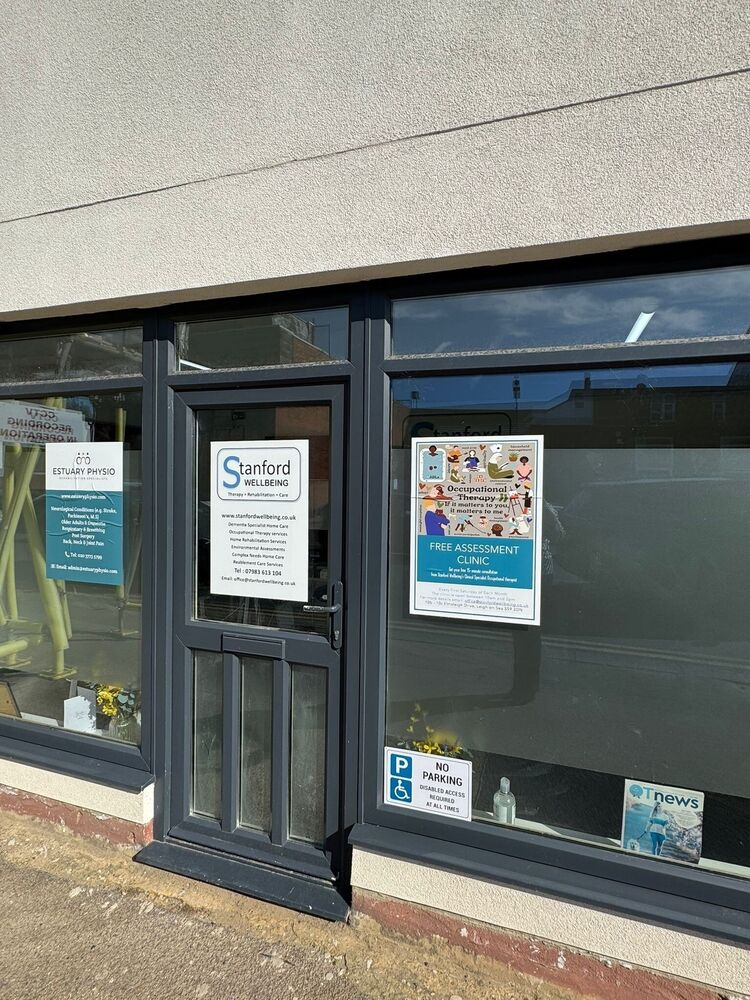
Once safe to travel, many clients continue recovery at our clinic in Leigh-on-Sea, Essex. These sessions use equipment and evidence-based protocols for ongoing hip rehabilitation. Your therapist will progress exercises to rebuild endurance, coordination and confidence.
Clinic Programme Highlights
- Resistance-band and weight training to strengthen hips and knees.
- Balance-board exercises and gait-retraining drills for coordination.
- Functional circuit to improve stamina and reduce fall risk.
- Individual assessments to refine walking pattern and posture.
Combining home and clinic rehabilitation provides the most complete recovery path for a fractured neck of femur.
Why Choose Estuary Physio for Hip Rehabilitation
Selecting the right rehabilitation provider is vital for successful recovery. Estuary Physio offers comprehensive, compassionate support from hospital discharge through to full independence.
- Experienced clinicians
HCPC and CSP-registered physiotherapists specialising in orthopaedic and elderly rehabilitation. - Evidence-based approach - treatments follow national hip fracture rehabilitation guidelines to maximise outcomes.
- Flexible delivery - home visits, clinic sessions or hybrid plans depending on your needs.
- Collaborative care - close communication with families, case managers and healthcare teams.
- Falls-prevention education - practical advice to maintain confidence and avoid future injuries.
Our mission is to help every client recover safely, confidently and independently, restoring strength, balance and quality of life.
Frequently Asked Questions About Hip Fracture Physiotherapy
When should physiotherapy start after a hip fracture?
Physiotherapy should begin within 24–48 hours after surgery once you’re medically stable. Early mobilisation prevents complications, reduces hospital stay and helps rebuild confidence in movement.
How long does hip fracture rehabilitation take?
Most people regain basic mobility within 6–12 weeks, while full recovery can take up to 6–12 months depending on age, surgery type and exercise consistency.
What are the best hip fracture recovery exercises?
Common hip fracture recovery exercises include ankle pumps, glute squeezes, heel slides, bridging and supported mini-squats. Your physiotherapist will adapt each exercise to your weight-bearing status and stage of healing.
Can physiotherapy help prevent another fall?
Yes. A tailored hip physiotherapy programme improves balance, strength and reaction speed. Combined with home-safety advice and posture education, it significantly reduces the risk of future falls.
Is home physiotherapy suitable after hip fracture surgery?
Absolutely. Home-based rehabilitation lets you practise safe movement in your everyday environment. It’s ideal for older adults or anyone recovering from a fractured neck of femur.
Related Services
We recognise that our clients may also be experiencing difficulties with other medical conditions when recovering with a broken hip. At Estuary Physio we have a different specialist Physiotherapist who also offer support within the following areas:
London
Specialist Physiotherapy

Our specialist physiotherapy service covers a wide range of areas in Central and Greater London
Essex
Specialist Physiotherapy

Our Essex physiotherapists cover areas including Benfleet, Basildon, Rayleigh, Southend and Chelmsford





